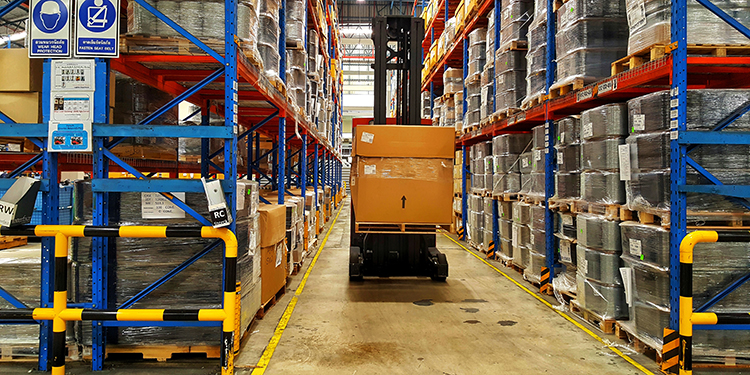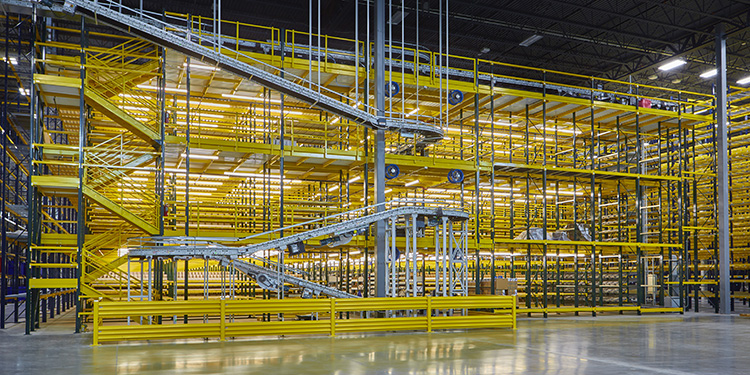As a safeguard against the industrial steel storage rack falling down, anchor bolts secure column base plates to the facility floor. Critical to the structural integrity of the rack, the anchors prevent the rack uprights from sliding out of position due to an impact. They also serve as a measure to prevent the system from tipping. As detailed in RMI’s ANSI MH16.1: Specification for the Design, Testing and Utilization of Industrial Steel Storage Racks, their usage includes both aisle columns and interior or rear columns on all frames.
Why Rack Anchors Are Vulnerable
Both base plates and anchors are designed and engineered to resist forces. However, they are still vulnerable to a potential impact from a forklift at the base of a column. Even in facilities that routinely train forklift drivers in safe operating practices, it is not uncommon for an accidental impact or collision to damage storage racks. This can potentially reduce the weight-carrying capability of the total system. It can also increase the risk of a collapse.
The anchors located on the aisle-facing rack columns—as well as those at the end of a row—are at particular risk of being sheared off at the floor. This is due to a baseplate shifting as a result of a forklift impact. Columns in those two areas are most prone to being clipped by a vehicle or its load. These collisions occur when the driver cuts the corner by turning too abruptly. Alternately, a driver not entering the storage position at a perpendicular orientation can clip a column.
Protection Options for Rack Anchors
To limit the effect of a forklift impact on the anchors, there are many protection options including these three:
- Anchor Size and Placement: The manufacturer may recommend more or larger, heavier anchor bolts to secure the base plates of aisle-facing columns, or those at the end of an aisle. Further, it is possible to “hide” anchor bolts cby installing them behind an aisle-facing column as a means of protection.
- Direct Column Protection: Typically applied to aisle-facing columns, these types of accessories include free standing steel plate column protectors wrapped around the face and sides of the rack column and factory welded to the base plates to secure them to the unit. Alternately, attach steel, foam or plastic guards directly to each column with bolts, rivets, or straps after the rack installation is complete.
- Offset Column Protection: Intended to protect columns at the end of a rack row, these include concrete bollards or full-depth steel tubes bent into an inverted U-shape and anchored via steel base plates to the floor. Another choice is free standing, industrial modular guard rail set a short distance away from the racking and bolted to the floor.
Operator Training Essential
Attachments and options provide a greater degree of anchor protection. However, regular, ongoing forklift driver training and management is essential. Additional measures that further reduce the chances of a forklift colliding with a rack include:
- Maintaining adequate operational clearance within rack system aisles.
- Keeping the aisle free of obstructions.
- Ensuring the facility is well-lit to maximize visibility.
Learn more about the full range of protective accessories available for racking installations in RMI’s publication, “Considerations for the Planning and Use of Industrial Steel Storage Racks.”




